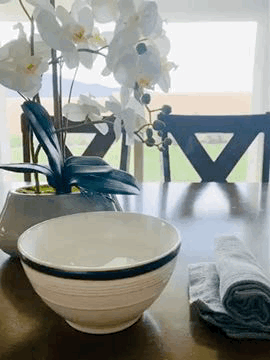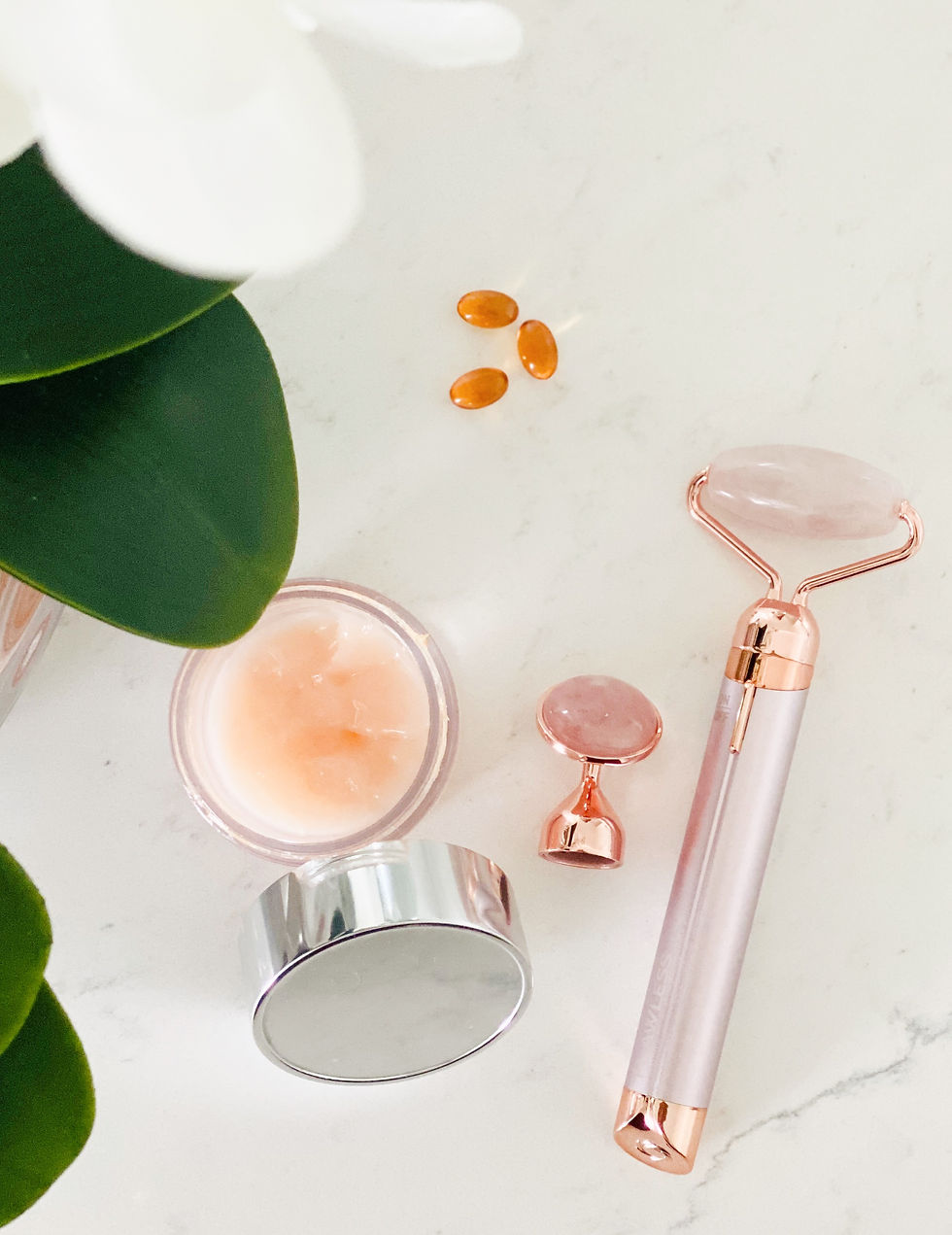Skindulgence - Part 1
- Libby Thomas
- Nov 6, 2020
- 5 min read
Healthy skin is not something we can achieve in a day. It is a process that needs to be regularly followed to ensure lifelong health. What we do to proactively help our skin today will definitely result in better skin in the future. You deserve your love and attention just as much as anyone around you. When you take time to care for yourself and your skin, you are not only boosting your confidence but also learning to prioritize yourself. This effort in itself is rewarding and is something I genuinely want for all of us.
The first part of skincare was just a reminder to many of us to lay the right foundation and now that we have gotten a hang of the basics, it is time to indulge in some skin care rituals that we can do to up our game.
Facial Steaming: I have always had an affinity to the warm mist of air that comes out of my cup of coffee, or an urge to lean over that pot of steaming pasta (far enough to be safe). The feeling of moist steam on your face is relaxing and is the easiest way to give you that spa like feel at home. Facial steaming has so many benefits for the skin and the best part is that it can be done at home using basic household items.
Some of the benefits of steaming are:
· Promotes circulation. · Opens up pores and loosens any buildup of dirt for a deeper cleanse.
· Opening up pores also softens blackheads which make them easier to remove.
· Allows the release of dead skin cells, bacteria, and other impurities that clog pores and contribute to acne. It also releases trapped sebum.
· Hydrates the skin by increasing oil production which naturally moisturizes the face, has a soothing effect and boosts radiance.
· If you’ve ever felt like your skincare products absorb more efficiently after a particularly steamy shower, you might be onto something. It increases the skin's permeability, enabling it to better absorb topical creams or serums.

Performed correctly, face steaming can increase your skin’s water content and leave it more hydrated. The water in the steam penetrates the deeper layers of skin to hydrate and make it look plump. But, on the downside, if you spend too much time with the steamer, you can subject your skin to increased dryness. Steaming in small spurts, somewhere between five to eight minutes is the best way to enjoy the perks of this skin care ritual. To ensure your skin is supple, bouncy, and plump post-steam, always follow with a hydrating serum and/or moisturizer. For dry complexions, slapping on a moisturizing mask for a few minutes post-steam will allow newly purified pores to suck in as much hydration as possible. For oily or acne-prone skin, applying a mask that’s both hydrating and antibacterial will be an added skincare bonus.
How to:
· Always clean your face and steamer (if using one) prior to session. You can also boil 1-2 cups of water and pour into a heatproof bowl and drape towel over head and if you do not own a steamer.
· Green tea leaves, lemon slices or essential oil can be added to the water.
· Keep the face 10 inches away from the source of steam.
· Steam for not more than 5-8 minutes (keep a timer).
· Play your favorite relaxing music and enjoy the feel of a good steam.
· Follow up with an exfoliator and face mask.
Exfoliation: The skin creates new cells in the inner layer called the dermis. As part of the process of regeneration, old dead skin cells are pushed to the outer layer of the skin called epidermis and eventually these dead cells flake off. As we age the cell cycle begins to slow down and eventually the dead cells accumulate and pile over the top layer of the skin making it look dull, tired, causing clogged pores, acne and even pigmentation. Exfoliation plays a very important role in this particular step of skincare as it removes the dead skin and thereby:
· Allowing better absorption of products
· Prevents clogging of pores and acne
· Evens out skin tone and removes pigmentation
· Stimulates the production of collagen that gives the skin a fuller look
There are 2 types of exfoliation, Physical and chemical exfoliation:
Physical exfoliators are either devices/ tools that can be used on the face to remove the dead skin layers or scrubs that manually remove and dislodge the topmost layer of the skin which contains the keratin and dead cells. Physical exfoliaters consists of washcloths and scrubs that are both store bought or homemade and when used in the right way have similar effects to chemical exfoliator. There are plenty of natural substitutes for physical exfoliaters. The skin of the face is thinner than that on the body so it is better to avoid sugar, coffee, sea salts and other coarse mediums on it. Here are a few ingredients that are finer and better suited for the facial skin:
Oats: finely ground oats gently unclogs pores while the natural saponins cleans and absorbs dirt and oil.
2 tbsp uncooked oats+warm water/milk/yogurt/apple cider vinegar.
Finely grind the oats in a blender, take a pinch onto the palm of your hands, add the liquid medium of choice until you form a paste and gently massage onto face and neck.
Baking soda: it is especially useful for oily skin as it absorbs the excess oil. It’s an excellent at-home microabrasive with its super fine texture.
1 tsp baking soda+your regular liquid skin cleanser
The easiest scrub to make, mix both together and you have an exfoliating cleanser.
Rice powder: ground rice powder is an excellent cleanser, and especially brown rice flour has anti-inflammatory and oil absorbing benefits.
2 tbsp ground rice powder+1 egg white
Grind the rice to a very fine powder, add an egg white to create a paste and massage it into the skin using circular motions.

Chemical exfoliators gently remove the dead skin by dissolving the bond between the dead cells and they have been hailed as the safest forms of exfoliation. They have 3 basic types:
AHA (alpha hydroxy acids): these are water soluble acids such as glycolic acid, mandelic acid, lactic acid (suitable for all skin types).
BHA (beta hydroxy acids ): these are oil soluble acid such as salicylic acid (suitable for oily skin type).
Other active ingredients such as Retinol, Adapalene etc.
Chemical exfoliaters can be introduced gradually into skin care routine from lower concentrations and lower frequency to one that suits your skin.
And for those among us who like to stick to simple and basic products, there are some natural ingredients that act as mild chemical exfoliators. These ingredients can often be used by itself or mixed with other ingredients to make the perfect DIY exfoliator. Play around and find your personal best recipe using some of the ideas below.
Natural Alpha Hyroxy Acids:
Lactic acid: Yogurt, raw milk, tomatoes
Citric Acid: Kiwi, Citrus fruits, Berries
Malic acid: Apples, bananas, pineapples
Natural Beta Hydroxy Acids:
Salicylic acid: strawberries
Make a puree of the fruits and gently massage over the face for a minute to enjoy the benefits of natural chemical exfoliation.
How to:
· Start by cleaning your face with a gentle cleanser.
· Make sure your face is slightly damp.
· Apply on face using circular, small, gentle strokes, avoiding the eye area.
· Massage anywhere between 30 seconds to a minute.
· Rinse off with lukewarm water.
· Follow with a hydrating serum or cream.
Is it too much to ask to take a little time in our week or even month to nurture ourselves? The knowledge of how deeply God loves us will often bring us to a place where we begin to see our whole self (body, soul, spirit) in a different light. Let us take this route and see how beautifully our body responds to our love and attention. "May you have the power to understand how wide & how long & how high & how deep His love is." - Ephesians 3:18
Revive...Renew...Restore...




Comments